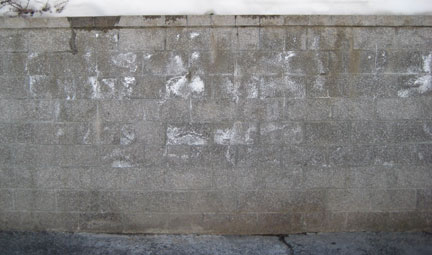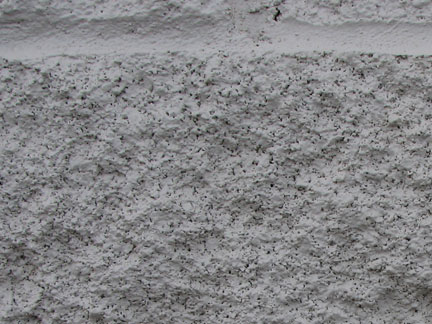| Painting
Tips:
This database of genuinely useful tips is a new section which began
in late 2008 & will be updated periodically.
It represents a fraction of the industry knowledge that Jeff
Keller and the Paint Factory staff have absorbed over years of working in the
paint industry & with professional contractors on projects
ranging from huge & complicated to the small, yet still
important. If
there is something you’d like information or feedback on, call
Jeff or e-mail him at jeff@montanapaintfactory.com |
|
General
| Architectural
Paints & Stains
| Industrial
Paints & Coatings
| Pictures
are Worth a Thousand Words
|
General
Painting Tip
- Coordinating Colors.....
"That color looked Awesome in the parade home
we walked through. Why doesn't
it look that way in our
home?" Click
here for our informative pdf on how you can get the best
paint results.
- Comparing Paint Quality
& Prices....Who in town has the best quality paint
and prices.
You might be surprised! Click
here to download our informative pdf on how to compare
apples to apples
when buying paint.
- Before
any painting project begins, it is important to remember
to purchase all necessary paints, stains & associated
products from The Paint Factory. No, really.
- Most large paint
manufacturers make three levels of quality for their
interior & exterior paints. These levels of quality are referred to as “Good”, “Better”, and “Best”.
When comparing one brand’s quality & price to another
brand, it’s important to know that what is being
compared is an accurate comparison (i.e. “better”
vs. “better”, etc.). “better” is sometimes
also referred to as a manufacturers’ “mid-line” or “professional
best”.
- Surface
preparation is as important (sometimes more important) as
product selection.
- Ideally,
exterior painting is done during the summer months. However, most high-quality acrylic latex paints made
today can be applied when surface & air
temperatures are above 35 degrees F before, during &
after their application. This
doubles the length of time people have to get their
project(s) done each year.
The thing to remember is that early-spring &
mid-to-late fall, the over-night lows interfere with paint
drying properly. To
prevent temperature & dew-related problems both early
and late-season, only apply paints & stains for a few
hours during the warm part of the day. This allows a
few hours of decent weather to ensure adhesion and film
formation before cold temperatures set in for the evening.
Back
to Top |
|
|
Tips
for Architectural Paints & Stains
- Because
oil-based paints (alkyds) fade & chalk with exterior
exposure, 100% acrylic latex paints & solid stains are
typically preferred on exteriors because of their color
& gloss retention as well as their flexibility.
- Both
interior and exterior handrails (metal & wood)
perform/hold-up much better when an oil-based product is
used.
Water-based latex paint products categorically do
not hold up to people’s hand oils over time and lead to
premature failures.
Back
to Top |
|
|
Tips
for Industrial Paints & Coatings
- Two-component
products do not like to be used/applied when the relative
humidity is at-or-above 85% humidity (some as low as 80%).
It’s important to be aware of weather conditions
when using these products.
Excessive humidity can exist on a relatively nice
day. Inexpensive
barometers can be purchased at hardware stores or splurge
on an electronic one.
High humidity can prevent the necessary chemical
“cross-linking” from happening when part A is added to
part B. This is one of those that’s easier to prevent than
to fix.
Back
to Top |
|
|
| Pictures
are Worth a Thousand Words |
 Efflorescence
– This is something that can happen to masonry surfaces
(usually exterior) that are left unsealed and exposed to
moisture (water) over time.
When the unsealed masonry gets wet, the salts &
lime contained in the masonry are drawn to the surface and lay
on the surface in the form of a white “salty looking”
stain. The
extent that the efflorescence has been allowed to build up determines
how easy or difficult it will be to remove. Efflorescence
– This is something that can happen to masonry surfaces
(usually exterior) that are left unsealed and exposed to
moisture (water) over time.
When the unsealed masonry gets wet, the salts &
lime contained in the masonry are drawn to the surface and lay
on the surface in the form of a white “salty looking”
stain. The
extent that the efflorescence has been allowed to build up determines
how easy or difficult it will be to remove. |
 How
alkyds (oil-based paints) chalk & fade –
Categorically, alkyd products will chalk & fade with
outside exposure. On
interior applications that are not subject to exposure, this
does not happen. However,
alkyds used on interior or exterior work can “yellow” over
time (slight yellowing is especially predicable when using
white). When
potential “yellowing” is a concern, seek out
“non-yellowing” alternatives such How
alkyds (oil-based paints) chalk & fade –
Categorically, alkyd products will chalk & fade with
outside exposure. On
interior applications that are not subject to exposure, this
does not happen. However,
alkyds used on interior or exterior work can “yellow” over
time (slight yellowing is especially predicable when using
white). When
potential “yellowing” is a concern, seek out
“non-yellowing” alternatives such
as 100 % acrylics and
urethane. |
 Pin-holing
on cinderblock (CMU- Concrete Masonry Units) - This
situation (problem) is caused by block filler primers Pin-holing
on cinderblock (CMU- Concrete Masonry Units) - This
situation (problem) is caused by block filler primers
or
elastomeric coatings being spray- applied but Not
Back-Rolled to work the product into the substantial
porosity that exists in all CMU applications.
This problem becomes
a big problem when
wind-driven rain (water from any source) gets behind the
dried paint film and causes extensive premature
failures. |
| Back
to Top |

